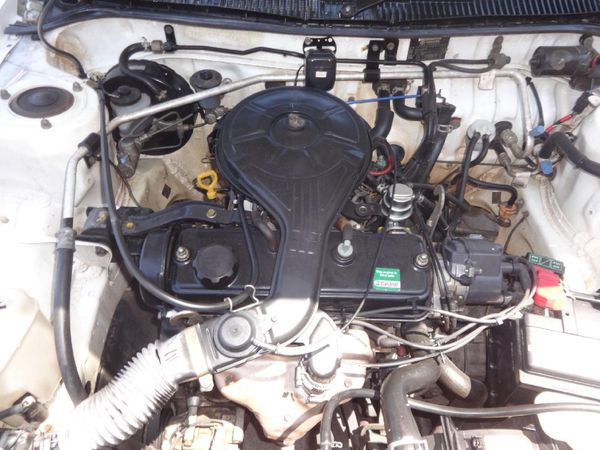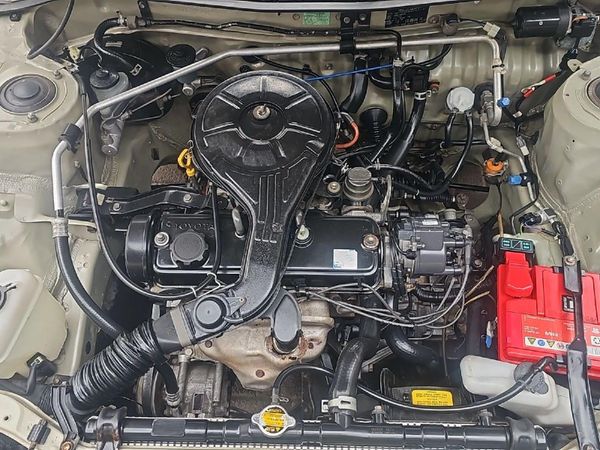Explore the most recent Patterns in Engine Modern Technology Via Tazz
In the swiftly progressing landscape of vehicle innovation, Tazz stands at the forefront, highlighting substantial innovations in engine systems that focus on both development and sustainability. From hybrid engines that maximize gas effectiveness to the appearance of hydrogen gas cells, the patterns shaping modern-day powertrains are not just improving efficiency but likewise addressing critical ecological obstacles.
Hybrid Engine Innovations
Hybrid engine innovations stand for a crucial shift in vehicle innovation, integrating the benefits of internal burning engines with electrical propulsion systems. This integration not only enhances gas performance however also minimizes emissions, conference significantly rigid ecological regulations. By utilizing both power sources, hybrid engines can enhance efficiency, providing power when required while saving gas throughout less requiring driving problems.
Current innovations in hybrid modern technology include improvements in battery effectiveness and regenerative braking systems. These advancements enable better energy recuperation during slowdown, which can be rerouted to aid in acceleration or power auxiliary systems. Suppliers are focusing on lightweight products and small layouts to make best use of the efficiency of crossbreed powertrains.
The advancement of plug-in crossbreeds has also expanded the market, making it possible for motorists to charge their vehicles using basic electric outlets. This feature typically permits for considerable all-electric range, further lowering dependence on typical gas. tazz. As the auto market remains to develop, hybrid engine technologies are anticipated to play a critical role in bridging the gap in between traditional lorries and totally electrical versions, providing a transitional service that provides to varied consumer requirements and preferences
Advancements in Electric Powertrains
The automobile landscape is rapidly evolving, with electrical powertrains becoming a leading force in sustainable transport. Breakthroughs in electrical car (EV) technology are significantly boosting individual, performance, and performance experience. Key technologies consist of improvements in battery chemistry, which have actually enhanced power density, reduced billing times, and extended total battery life.
Solid-state batteries, for example, assure to transform the marketplace by offering greater security and efficiency contrasted to traditional lithium-ion cells. Innovations in regenerative braking systems are allowing lorries to recover power throughout deceleration, contributing to total efficiency.
In enhancement to battery modern technology, electric motor styles are coming to be more advanced. Advancements such as incorporated motors and advanced thermal administration systems are aiding to optimize power delivery and decrease weight, inevitably boosting vehicle dynamics.

Collectively, these breakthroughs emphasize the commitment to change towards cleaner, much more efficient transportation remedies, placing electric powertrains at the center of auto technology.
The Surge of Hydrogen Gas Cells
Progressively, hydrogen fuel cells are gaining grip as a sensible option to conventional internal burning engines and battery electrical cars. This technology harnesses the chemical power kept in hydrogen, converting it right into electrical energy through an electrochemical response with oxygen. The main by-product of this procedure is water, making hydrogen gas cells an ecologically pleasant choice with zero exhausts at the tailpipe.

Car manufacturers are significantly purchasing hydrogen fuel cell innovation, acknowledging its possibility for long-range applications and rapid refueling capabilities that match traditional gas. In addition, fields such as heavy-duty transport and public transit are particularly appropriate for hydrogen fuel cells, where battery electric options might fail because of weight and array constraints.
As study and financial investment remain to increase, hydrogen gas cells are positioned to play a substantial duty in the future landscape of tidy transport and power options.
Enhancements in Internal Combustion Engines
Innovations in inner combustion engine (ICE) technology are changing standard Your Domain Name cars to fulfill contemporary environmental criteria and performance expectations. Straight fuel shot, for instance, permits for much better atomization of fuel, leading to even more complete burning and enhanced power result.
Furthermore, turbocharging has actually gotten prominence, permitting smaller engines to supply higher efficiency without the weight of larger engines - tazz. This innovation not only increases performance but also adds to decrease gas usage. Variable shutoff timing systems are also being fine-tuned, enabling engines to adjust to various driving problems for improved torque and responsiveness
Additionally, making use of light-weight products in engine building is coming to be conventional, more enhancing gas performance by decreasing total vehicle weight. Engine control systems (ECUs) are progressively advanced, making it possible for real-time adjustments that enhance efficiency and emissions.
These enhancements collectively indicate a pivotal shift in ICE innovation, straightening with global sustainability goals while still supplying the efficiency drivers get out of their automobiles. As the sector evolves, these improvements remain to shape the future of standard auto design.
Future Trends in Engine Efficiency
Significant developments in engine effectiveness are prepared for as suppliers concentrate on incorporating cutting-edge technologies to meet strict environmental policies and consumer demands. The shift towards electrification, hybrid systems, and alternative gas is improving the auto landscape, driving technologies that boost gas economic situation and lower discharges.
One of the essential patterns is the implementation of advanced materials and making strategies. High-strength alloys and lightweight composites add to lowered automobile weight, therefore enhancing overall efficiency. In addition, the fostering of turbocharging and variable valve timing technologies enables boosted power outcome from smaller engines, further boosting gas economy.

Conclusion
Technologies in crossbreed engine systems, electrical powertrains, and hydrogen fuel cells demonstrate a commitment to minimizing exhausts while boosting efficiency. Improvements in internal combustion engines and a focus on lightweight materials contribute to overall engine effectiveness.
From hybrid engines that enhance fuel effectiveness to the introduction of hydrogen gas cells, the fads forming modern-day powertrains are not just boosting efficiency yet additionally resolving essential ecological obstacles.Crossbreed engine technologies stand for a crucial change in vehicle innovation, integrating the benefits of interior combustion engines with electric propulsion systems.In addition, turbocharging has look at this site actually gotten importance, enabling smaller engines to deliver greater efficiency without the weight of bigger engines. Furthermore, the adoption of turbocharging and variable shutoff timing modern technologies permits for enhanced power outcome from smaller engines, even more boosting fuel economic climate.
Renovations in inner burning engines and an emphasis on light-weight materials contribute to overall engine efficiency.